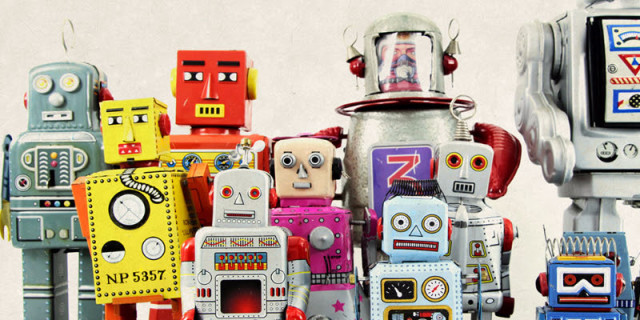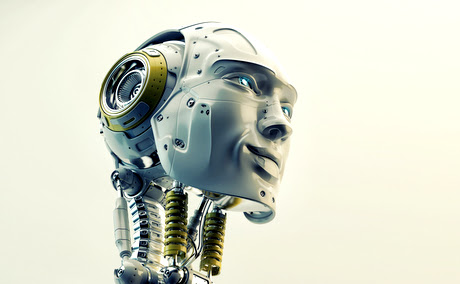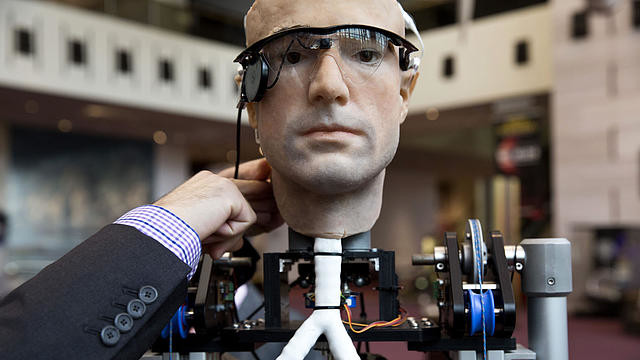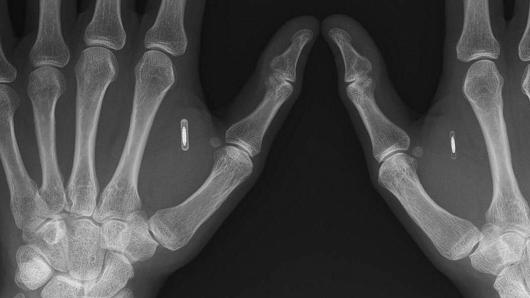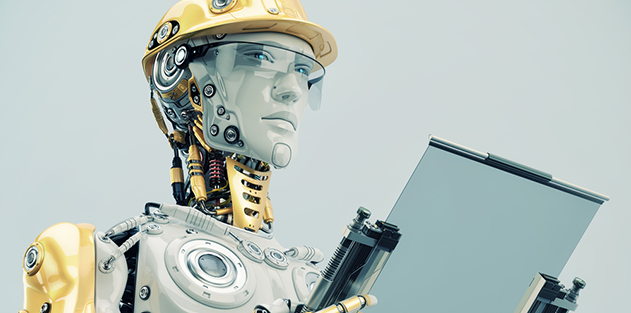Will Robots Put Everyone Out of Work? by Sandy Ikeda
Will workplace automation make the rich richer and doom the poor?
That could happen soon, warns Paul Solman, economics correspondent for PBS NewsHour. He’s talking to Jerry Kaplan, author of a new book that seems to combine Luddism with fears about inequality.
PAUL SOLMAN: And the age-old fear of displaced workers, says Kaplan, is finally, irrevocably upon us.
JERRY KAPLAN: What happens to people who simply can’t acquire or don’t have the skills that are going to be needed in the new economy?
PAUL SOLMAN: Well, what is going to happen to them?
JERRY KAPLAN: We’re going to see much worse income inequality. And unless we take some humanitarian actions, the truth is, they’re going to starve and live in poverty and then die.
PAUL SOLMAN: Kaplan offers that grim prognosis in a new book, Humans Need Not Apply. He knows, of course, that automation has been replacing labor for 200 years or more, for decades, eliminating relatively high-paying factory jobs in America, and that new jobs have more than kept pace, but not anymore, he says.
I haven’t read Kaplan’s book, but you can get a sense of the issue from this video.
The fear is that, unlike the past when displaced workers could learn new skills for a different industry, advanced “thinking machines” will soon fill even highly skilled positions, making it that much harder to find a job that pays a decent wage. And while the Luddite argument assumes that the number of jobs in an economy is fixed, the fear now is that whatever jobs may be created will simply be filled by even smarter machines.
This new spin sounds different, but it’s essentially the same old Luddite fallacy on two levels. First, while it’s true that machinery frequently substitutes for labor in the short term, automation tends to complement labor in the long term; and, second, the primary purpose of markets is not to create jobs per se, it is to create successful ventures by satisfying human wants and needs.
While I understand that Kaplan offers some market-oriented solutions, the mainstream media has emphasized the more alarmist aspects of his thesis. The Solmans of the world would like the government to respond with regulations to slow or prevent the introduction of artificial intelligence — or to at least subsidize the kind of major labor-force adjustments that such changes appear to demand.
Short-Term Substitutes, Long-Term Complements
Fortunately, Henry Hazlitt long ago worked out in a clear, careful, and sympathetic way the consequences of innovations on employment in his classic book, Economics in One Lesson. Here’s a brief outline of the chapter relevant to our discussion, “The Curse of Machinery”:
(As Hazlitt notes, not all innovations are “labor-saving.” Many simply improve the quality of output, but let’s put that to one side. Let’s also put aside the very real problem that raising the minimum wage will artificially accelerate the trend toward automation.)
Suppose a person who owns a coat-making business invests in a new machine that makes the same number of coats with half the workers. (Assume for now that all employees work eight-hour days and earn the going wage.) What’s easy to see is that, say, 50 people are laid off; what’s harder to see is that other people will be hired to build that new machine. If the new machine does reduce the business’s cost, however, then presumably it takes fewer than 50 people to build it. If it takes, say, 30 people, there still appears to be a net loss of 20 jobs overall.
But the story doesn’t end there. Assuming the owner doesn’t lower her price for the coats she sells, Hazlitt notes that there are three things she can do with the resulting profit. She can use it to invest in her own business, to invest in some other business, or to spend on consumption goods for herself and others. Whichever she does means more production and thus more employment elsewhere.
Moreover, competition in the coat industry will likely lead her rivals to adopt the labor-saving machinery and to produce more coats. Buying more machines means more employment in the machine-making industry, and producing more coats will, other things equal, lower the price of coats.
Now, buying more machines will probably mean she has to hire more workers to operate or maintain them, and lower coat prices mean that consumers will have more disposable income to spend on goods in general, including coats.
The overall effect is to increase the demand for labor and the number of jobs, which conforms to our historical experience in many industries. So, if all you see are the 50 people initially laid off, well, you’ve missed most of the story.
Despite claims to the contrary, it’s really no different in the case of artificial intelligence.
Machines might substitute for labor in the short term, but in the long term they complement labor and increase its productivity. Yes, new machines used in production will be more sophisticated and do more things than the old ones, but that shouldn’t be surprising; that’s what new machines have done throughout history.
And as I’ve written before in “The Breezes of Creative Destruction,” it usually takes several years for an innovation — even something as currently ubiquitous as smartphones — to permeate an economy. (I would guess that we each could name several people who don’t own one.) This gives people time to adjust by moving, learning new skills, and making new connections. Hazlitt recognizes that not everyone will adjust fully to the new situation, perhaps because of age or disability. He responds,
It is altogether proper — it is, in fact, essential to a full understanding of the problem — that the plight of these groups be recognized, that they be dealt with sympathetically, and that we try to see whether some of the gains from this specialized progress cannot be used to help the victims find a productive role elsewhere.
I’m pretty sure Hazlitt means that voluntary, noncoercive actions and organizations should take the lead in filling this compassionate role.
In any case, what works at the level of a single industry also works across all industries. The same processes that Hazlitt describes will operate as long as markets are left free to adjust. Using government intervention to deliberately stifle change may save the jobs we see, but it will destroy the many more jobs that we don’t see — and worse.
More Jobs, Less Work, Greater Well-Being
Being able to contribute to making one’s own living is probably essential to human happiness. And economic development has indeed meant that we’ve been spending less time working.
Although it’s hard to calculate accurately how many hours per week our ancestors worked — and some claim that people in preindustrial society had more leisure time than industrial workers — the best estimate is that the work week in the United States fell from about 70 hours in 1850 to about 40 hours today. Has this been a bad thing? Has working less led to human misery? Given the track record of relatively free markets, that’s a strange question to ask.
Take, for example, this video by Swedish doctor Hans Rosling about his mother’s washing machine. It’s a wonderful explanation of how this particular machine, sophisticated for its day, enabled his mother to read to him, which helped him to then become a successful scientist.
I had lunch with someone who was recently laid off and whose husband has a fulfilling but low-paying job. Despite this relatively low family income, she was able to fly to New York for a weekend to attend a U2 concert, take a class at an upscale yoga studio in Manhattan, and share a vegan lunch with an old friend. Our grandparents would have been dumbfounded!
As British journalist Matt Ridley puts it in his book The Rational Optimist,
Innovation changes the world but only because it aids the elaboration of the division of labor and encourages the division of time. Forget wars, religions, famines and poems for the moment. This is history’s greatest theme: the metastasis of exchange, specialization and the invention it has called forth, the “creation” of time.
The great accomplishment of the free market is not that it creates jobs (which it does) but that it gives us the time to promote our well-being and to accomplish things no one thought possible.
If using robots raises the productivity of labor, increases output, and expands the amount, quality, and variety of goods each of us can consume — and also lowers the hours we have to work — what’s wrong with that? What’s wrong with working less and having the time to promote the well-being of ourselves and of others?
In a system where people are free to innovate and to adjust to innovation, there will always be enough jobs for whoever wants one; we just won’t need to work as hard in them.
Sandy Ikeda is a professor of economics at Purchase College, SUNY, and the author of The Dynamics of the Mixed Economy: Toward a Theory of Interventionism.

